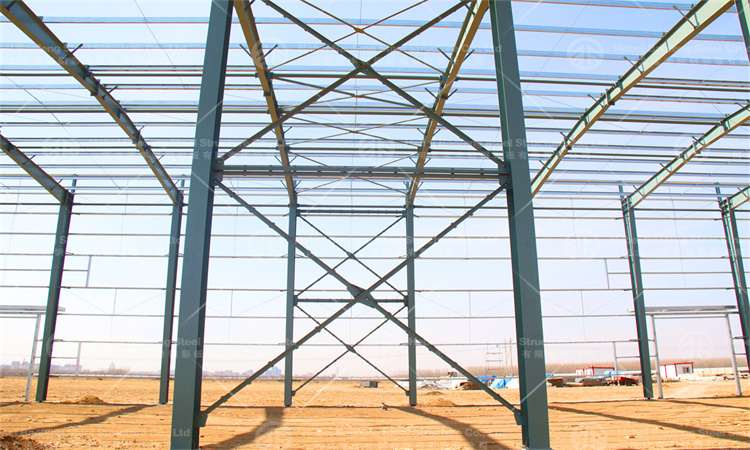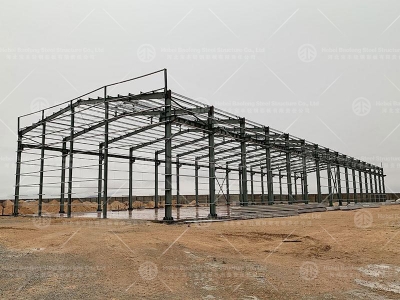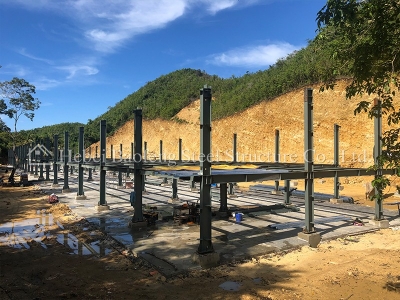The production of steel involves complex processes that transform raw materials into the final product. There are two main methods for making steel: the traditional Blast Furnace process and the modern Electric Arc Furnace process. Below is an in-depth explanation of each process:
1. Blast Furnace Process:
Step 1: Iron Ore Extraction
The first step in the Blast Furnace process is the extraction of iron ore. Iron ore typically consists of iron oxide and impurities such as silica, alumina, and other elements. Miners extract iron ore from mines and transport it to steel mills.
Step 2: Preparation of Iron Ore
The extracted iron ore is then crushed into small pieces and refined to remove impurities. The goal is to create a concentrated iron ore with a high iron content.
Step 3: Charging the Blast Furnace
A Blast Furnace is a massive structure, typically a tall cylindrical tower, lined with refractory materials to withstand high temperatures. The prepared iron ore, along with coke (a carbon-rich material derived from coal) and limestone, is charged into the top of the Blast Furnace.
Step 4: Reduction of Iron Ore
As the raw materials descend in the Blast Furnace, hot air is blown in from the bottom. The coke reacts with the iron ore, reducing the iron oxide to molten iron. The limestone reacts with impurities, forming slag.
Step 5: Collection of Molten Iron
The molten iron, now separated from impurities and called pig iron, accumulates at the bottom of the Blast Furnace due to its higher density. The slag, being lighter, floats on top of the molten iron.
Step 6: Tapping
Periodically, the molten iron and slag are tapped from the Blast Furnace. The iron is then cast into molds to form pig iron, while the slag is processed for various applications.
Step 7: Further Processing
Pig iron contains a high percentage of carbon and other impurities. It is further processed in a Basic Oxygen Furnace (BOF) or an Electric Arc Furnace (EAF) to produce steel with desired properties.
2. Electric Arc Furnace (EAF) Process:
Step 1: Scrap Collection
The Electric Arc Furnace process primarily uses recycled steel, known as scrap, as the main raw material. Scrap includes various steel products, such as old cars, appliances, and industrial waste.
Step 2: Charging the Furnace
Scrap is loaded into the Electric Arc Furnace, a large container lined with refractory materials. The furnace is equipped with graphite electrodes, which will conduct an electric current.
Step 3: Melting
An electric arc is created between the electrodes and the scrap. This high-intensity arc generates extreme heat, melting the scrap into liquid steel. The process is faster and more energy-efficient than the Blast Furnace method.
Step 4: Alloying and Refining
Alloying elements can be added to the molten steel to achieve specific properties. Additionally, fluxes are added to remove impurities, and oxygen is blown into the furnace for further refining.
Step 5: Tapping
Once the desired composition and temperature are achieved, the molten steel is tapped from the Electric Arc Furnace and cast into various shapes or further processed.
Step 6: Continuous Casting or Forming
The molten steel may undergo continuous casting, where it is solidified into semi-finished products like billets or slabs. Alternatively, it can be formed into finished products through rolling, forging, or other shaping processes.
Step 7: Heat Treatment
The final steel products may undergo heat treatment processes such as quenching and tempering to enhance their mechanical properties.
Both the Blast Furnace and Electric Arc Furnace processes are essential in steel production, each having its advantages and applications. The choice of method depends on factors such as the desired steel properties, cost considerations, and the availability of raw materials.



 Filipino
Filipino























 +8615720226351
+8615720226351
